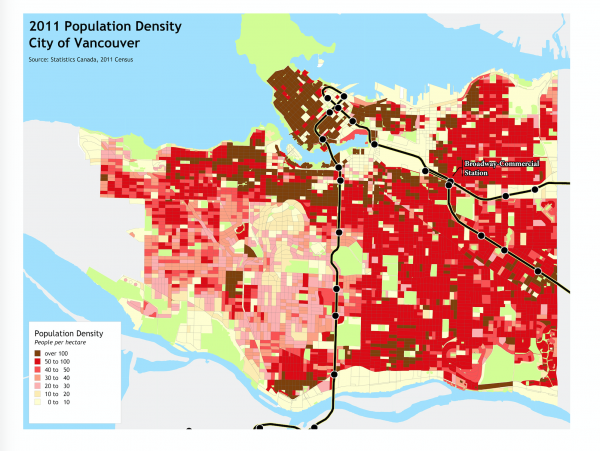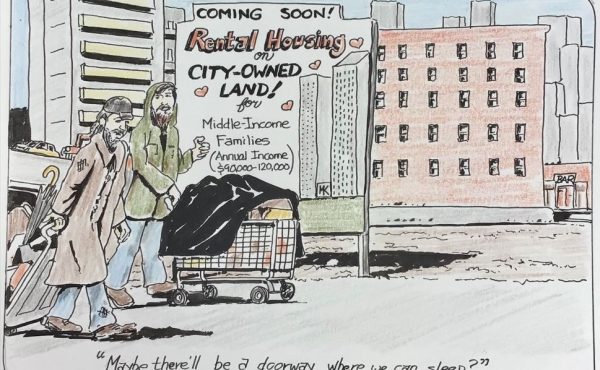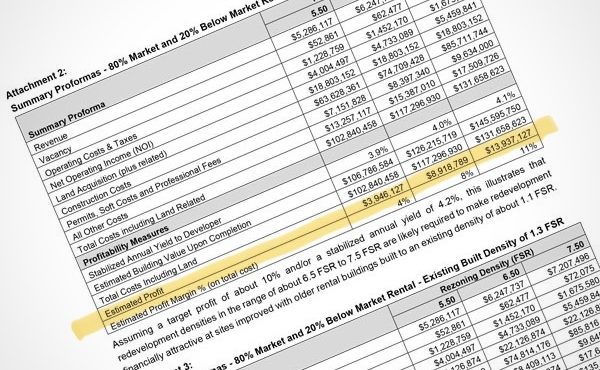What is the difference between “net” and “gross” density, and how do these relate to urban planning?
In Understanding Residential Density: Why is it so Confusing? we covered why density is considered an important but baffling issue in urban planning. Although it broadly refers to the number of people living in a specific area and helps us understand how densely populated an area is, there is a lot of misunderstanding about it. One of the most common involves the definition of “net” and “gross” density, so let’s dig in a bit deeper and try to find a little clarity.
As discussed in …Why is it so Confusing?, residential density is often expressed in dwelling or housing units per acre, in contemporary North American urban planning circles. Although one may find densities measured in dwelling or housing units per hectare in particular parts of Canada, acres remain the standard measure for reasons not worth delving into here.
Within this context, densities can be measured as “net” or “gross”, both of which can be important measures in helping urban planners and designers understand the density of population and land use within designated area towards making more informed decisions about how to create or transform the built environment.
Broadly speaking (with caveats coming later!), net density refers to the number of people living in an area, excluding parks, open spaces, and other non-residential land uses. This measure is calculated by dividing the total population by the total net residential land area. Simply put: it refers to the number of units per acre within a specific land area devoted to residential purposes. So, it may—but not always—include in driveways, private yards, and additional residential accessory structures, excluding public rights of way, parks, open spaces, and other non-residential land uses.
Gross density, on the other hand, generally includes all types of land uses, including parks, open spaces, and other non-residential land uses. This measure is calculated by dividing the total population by the total gross land area. Gross density often also includes infrastructure such as streets, sidewalks, and public spaces. This gives us a more comprehensive understanding of the overall land use in an area but often results in lower density numbers since including non-residential increases land area and the resulting units-to-land ratio. It’s important to also note that this also means that mixed-use urban neighbourhoods tend to have lower densities than ones that are primarily residential. Since gross density measures give us a more comprehensive understanding of the overall land use in a given area, many find it useful for comparing density across different areas.
Comparing net and gross density can give us a better understanding of the density of population and land use within a community or designated area. As a simple example: a neighbourhood with a high net density may have many people living in apartments and homes, while a neighbourhood with a high gross density may have many people living in high-rise buildings, as well as large parks and open spaces. As we learned from …Why is it so Confusing? though, ”may” is a keyword here. This might not be the case. Furthermore, labeling a density as “high” is vague since there is no standard definition of what “low”, “medium”, and “high” densities mean. This opens the doors to misinterpretation.
Given their differences, many believe that gross density measurements are often most useful when looking at large development areas that include internal roads, open spaces, and such. Net densities, in turn, are often considered more appropriate when looking at existing areas in search of infill opportunities. Again, however, their usefulness depends on intent.
Net and gross densities come with three important caveats. First, “net” and “gross” density definitions do differ slightly from place to place, so you’ll have to take the above explanation with a grain of salt. When looking at density-related information—be it maps, charts, graphs, or anything similar—the specifics matter. So, what is each municipality includes and excludes in each term is critical if you want an accurate picture.
Second, net and gross density numbers are intimately related to the area of land being measured. Base land area matters.
Third, many public and internal documents that include density numbers don’t explicitly specify whether the numbers are “net” and “gross,” let alone the specifics of each definition. The public document from the City of Vancouver below is a case in point.

Presumably, the fact that the green park spaces are visually separated from the rest of the blocks means that the densities are net, but this is an assumption: explicitly clear annotations and definitions are required. Specifics matter: if it is net density, do the numbers include driveways? Yard spaces? The answers to simple questions like this will ultimately change the meaning of the numbers.
Now don’t get me wrong, kudos to the City of Vancouver for providing this scale of density information. Publicly available density by the block information is a rarity. But lack of clarity can and does lead to large misinterpretations of density information by the public, municipal officials, and others. Misinterpretations also can—and has—been used strategically towards more dishonest ends, as a means of legitimizing shady developments under the guise of “necessary densification” of “low-density” areas. As discussed in …Why is it so Confusing? clarity about density numbers is very important given how baffling it is.
So, what can we take away from this?
Well, both net density and gross density can provide equally valuable perspectives on the density of population and land use in a specific area. Net density generally refers to a specific land area devoted to residential purposes while gross density refers to other non-residential land uses including parks and streets. But specifics matter and like so many planning-related issues the devil is in the details.
In summary:
- The definition of “net” and “gross” density is a common point of confusion.
- Net density and gross density can provide equally valuable information on land use and the density of people within a given area. But it depends on a number of variables.
- Net and gross density differ in focus. Generally, net density highlights the residential component of population density, while gross density takes into account all land uses. But specifics matter.
- What is included and excluded in both net and gross density numbers differs based on municipality. Clarity is required to make good sense of the information.
- Base land area matters for understanding net and gross density numbers.
- Frequently, public documents that include density measures do not explicitly cite whether net or gross densities are being communicated. This often leads to misinterpretations of density information.
- In general, gross densities are lower than net densities since they include larger areas including public rights of way. But it depends.
- Mixed-use urban neighbourhoods tend to have lower densities than ones that are primarily residential. But it depends.
- Some believe that gross density measurements are best used when looking at large developments that have several internal roads and open spaces. Many also find it useful for comparing density across different areas.
- Many consider net densities most useful for analyzing existing neighbourhoods for infill opportunities.
- Ultimately, both net and gross density measures can be useful but also be abused.
Some Useful Resources:
- Measuring Density: Working Definitions for Residential Density and Building Intensity by Ann Forsyth
- Visualizing Compatible Density via the Urbanist
***
Related pieces in the S101S:
- S101 Series: Introduction and Call
- S101S: Understanding Residential Density: Why is it so Confusing?
**
All pieces in the S101S:
- S101 Series: Introduction and Call
- S101S: Understanding Residential Density: Why is it so Confusing?
- S101S: Understanding Residential Density: Net vs Gross Density•
- S101S: Understanding Residential Density: FSR, Building Setbacks and Height Regulations
- S101S : Understanding Shadow Studies: Why They Matter –
- S101S: What’s a Development Pro Forma—And Why Should you Care?
- S101S: Defining Public Space: The Basics
- S101S: Understanding Affordable Housing: The Trickle-Down Theory of Housing – Myths and Realities
- S101S: Describing Building Types: Why They Matter
- S101S: Describing Building Types: Formal and Use-Types
- S101S: Explaining Transit-Oriented Development: Benefits and Drawbacks
*
Erick Villagomez is the Editor-in-Chief at Spacing Vancouver and teaches at UBC’s School of Community and Regional Planning. He is also the author of The Laws of Settlements: 54 Laws Underlying Settlements Across Scale and Culture.






2 comments
Thank you for enlightening me. Looking forward to reading the next article.
My pleasure…I’m glad you found it helpful! 🙂
E